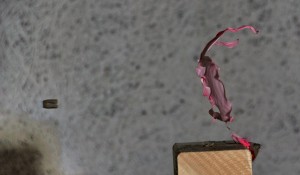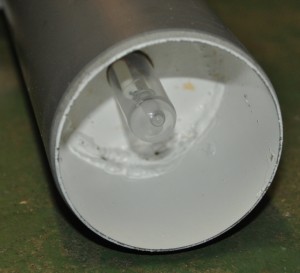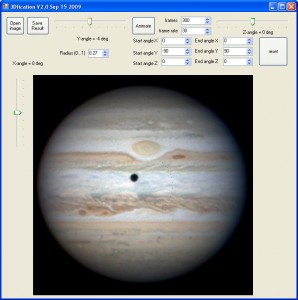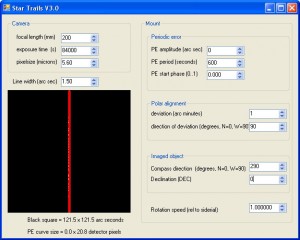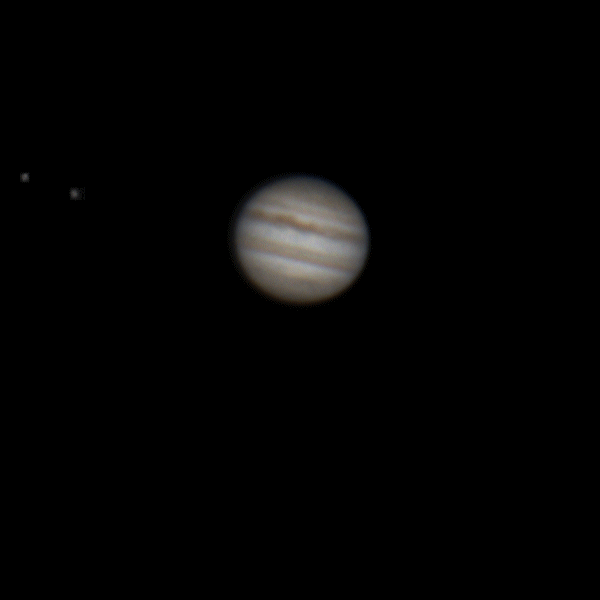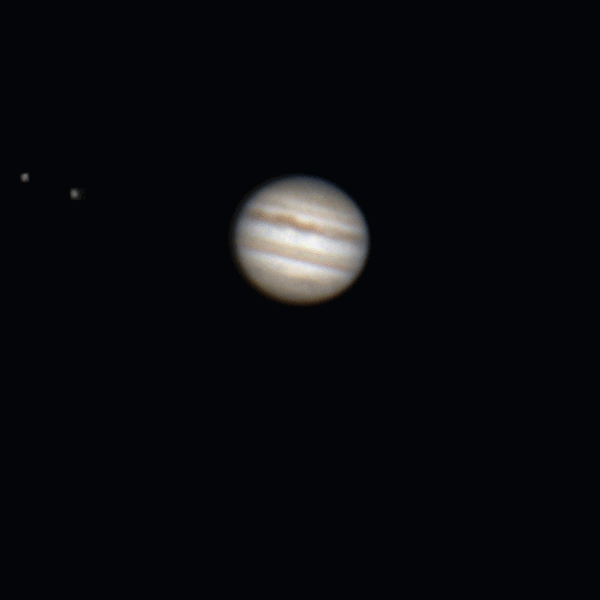
I have a Kenko Skymemo, which has proven to be a portable mount with a good polar scope, which makes for nice images during trips to dark places. I had to replace the tripod though, since it is not designed for lattitudes as high as mine (51 degrees). This was solved with manfrotto 410 with geared head.
Looking in the internet for a specification of the the priodic error, I could not find any real proof of its size. Samir Kharusi has the most detailed review I could find, but still no details.
So I set out the measure it myself. This is what I did
- mount my Nikon D90+200mm+2x teleconverter on
- manfrotto tripod with geared head
- accurate polar alignment using the scope
- then spoil the polar alignment by tilting the kenko to the west, to induce a drift of the stars so the periodic error shows as sine-wave line star trails in the photo
- exposure of 10 minutes on Altair (DEC=8 degrees, chosen close to DEC=0, the most critical area in space with respect to star trailing due to periodic error and polar alignment error).
Some calculations:
pixel size of D90 is 5.5 microns, so at f = 2x 200mm , this corresponds to 3 arc seconds per pixel. The found periodic error in the images must be divided by cos(DEC_Altair), but since cos(8 degrees)=0.99, this factor is not significant.
The wiggle found in the 10 minute expose was 14 pixels peak-to peak, thus the PE=14×3=42 arc seconds peak to peak. A bit disappointing to me as I read somewhere it was around 15 arc seconds. This would mean that using a D90, PE would be invisible at any exposure time and any declination, using f=400mm/14pix = 29 mm focal length. Hardly a tele-lense value.

trails of Altair (bright) and a close by star in a 100% crop of a D90 image at f=400mm, exposure time=607s
The good news is that the curve is very smooth. This means that during short exposures of 1-2 minutes, the chances of getting a trail-free image is high, depending though on where you are on the sine wave of the periodic error (peak, valley=good, in between is bad).

Altair in the south at during the PE measurement
UPDATE: Hutech, vendor of the Skymemo (by person of Ted Ishikawa) confirms via email that this is a normal PE value, quote: “Yes, the performance seems to be quite normal.”








